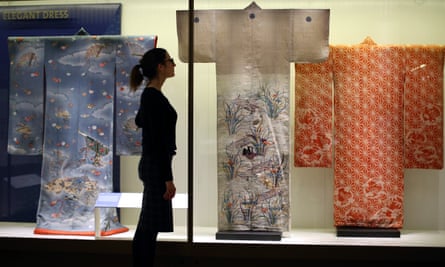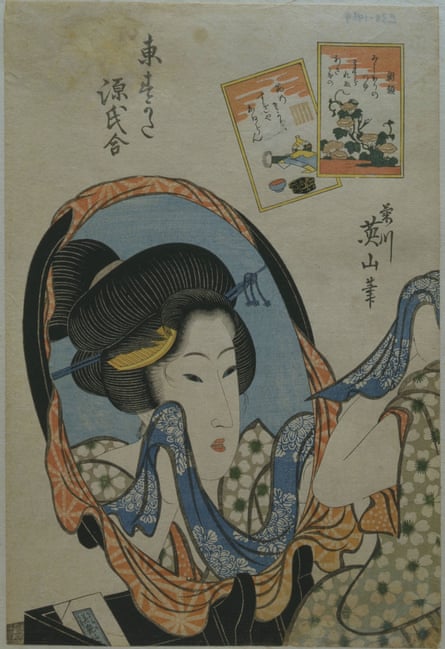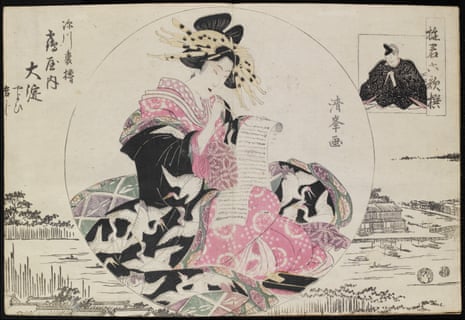Japan invented modern art. That is the highly convincing message I took from the spruced-up and rethought Toshiba Gallery of Japanese Art that has just opened at the Victoria and Albert Museum in London.
The first clue is in front of you as you walk into the atmospherically lit gallery (it’s as shadowy as a fashionable Japanese restaurant) – and it is massive. It is an opulent bronze sculpture of peacocks, a tree stump and a three-legged urn that a Victorian director of the V&A bought after it caused a sensation at the 1878 Exposition Universelle in Paris.

This rich piece of decorative art may not look very modernist – but the vogue for all things Japanese that made it a hit in Paris, and enthused the young and innovative V&A (founded in 1852) to pay a fortune for it, was a driving force in the birth of the avant garde. The pioneers of European modernism in 19th-century France made no secret of their love of Japanese art, in all its sensuality and freedom. From Edouard Manet’s portrait of the dirty realist writer Zola sitting among his Japanese art finds to Van Gogh’s loving copies of the Japanese woodblock prints he collected, the early avant garde in France openly proclaimed their debt to artists like Hiroshige and Hokusai.
Yet this debt has been downplayed by modern art historians. As western culture became less enamoured of Japan – it may be significant that New York’s MoMA was shaping modernism’s story in the era of Pearl Harbor and Hiroshima – the woodblock prints came to be seen as mere “raw material” for modern art, even as “primitive” artefacts that simply served to unleash a greater western creativity.

This is no longer sustainable, examining the remarkable art in the new V&A gallery. The bulk of the museum’s collection of Japanese treasures come from the exact period when Japanese art engaged with outside influences, embraced new lifestyles and created a singularly poetic portrait of modern life: the Edo period (1603 to 1868). The arts of Japan in this period are flamboyant and fascinating, from luxurious kimonos to eerily lifelike theatre masks.
Yet at the heart of the opulence is an artistic revolution. Merchants became a wealthy sector of Japanese society by the 17th century. Trade with the Dutch East India Company was part of the era’s dynamic commerce – porcelain made for Dutch officials is on display here. Even Christianity made inroads before it was suppressed, as a crucifix attests. Japan was at once suspicious and engaged with the emerging global economy. In Edo, the new commercial classes created a subculture, an alternative way of life that rejected tradition and embraced hedonism.

No civilisation has ever glorified the temporary as eloquently and explicitly as this culture of the “floating world”. The floating world was both an actual place (the pleasure quarter of Edo) and an ideal of living in the present, accepting life’s flow. And the reality behind this ideal? Money, merchants and prostitution.
At the heart of the Toshiba gallery are the artists of the floating world – the great woodblock print designers whose sensitive, poetic evocations of courtesans, dancers and sumo wrestlers make you pause, breathe in, and savour the frozen moment.
The V&A has one of the world’s great collections of ukiyo-e – “pictures of the floating world” – by all the great masters, and choice examples are on view here. Looking at these captivating works it is clear that we have got the history of modern art wrong. It is not true that western artists found something in ukiyo-e that helped them invent modernism. The fact is that some of the most subversive ideas of modern art – above all the modern sensibility itself, the feeling as Karl Marx put it that “all that is solid melts into air” – were invented in Japan in the 1700s and expressed consummately by Hokusai, Utagawa Kuniyasu and Hiroshige in the early 19th century.
Modernity came to European art second-hand. In James Tissot’s 1880 painting The Prodigal Son in Foreign Climes, a European is seduced by the floating world, ensnared by the allure of dancing geishas. He seems a clumsy stranger in the modern life – and art – that Japan invented.

Comments (…)
Sign in or create your Guardian account to join the discussion